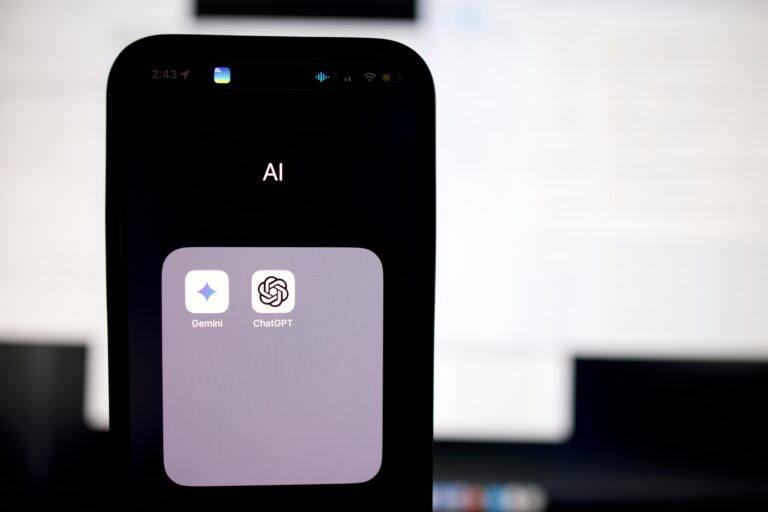Few fields have felt the impact of AI-powered large language models as much as the field of writing. Tools like ChatGPT are changing writing instruction, literacy initiatives, and science of writing research in previously unimaginable ways. The potential for leap-worthy advances in the way students write, research and synthesize information is unprecedented – as are the challenges and threats to authenticity, critical thinking, and skills development. Teacher Adam Sparks, founder of Short Answer – a student literacy and writing platform – knows this well. In a Q & A with 5 Questions, Sparks discusses the evolving technology and how it is causing K-12 teachers to adapt their instruction.
How is AI impacting your work?

Artificial intelligence has completely upended K12 writing instruction on a few fronts.
Monitoring how much of an influence AI is having on student writing processes once that writing leaves the classroom is very difficult. As such, an unexpected use case for Short Answer has been in helping teachers bring more writing practice into the classroom where AI’s influence can be monitored and controlled. We’re now building AI-powered writing scaffolds into Short Answer to help educators teach students how to use AI effectively to support their writing process. When we first launched Short Answer, we never would have imagined that AI literacy would be a use case for us, but it’s 2024 and here we are.
Another thing we think about a lot is student motivation. Why will students want to learn how to write in a world in which machines can write faster and (often) better than they can? It’s the same logic that asks “Why learn Latin (it’s a dead language)?” or “Why memorize roads (we have GPS)?” We have a strong suspicion that students are going to ask similar questions of writing, so we’re working to preserve and improve student motivation by making writing more social and fun.
Why did you develop Short Answer?
When we first launched Short Answer, we thought we were building a broad formative assessment platform (‘a la Formative, Quizzizz, Peardeck) but with a specific focus on peer-to-peer instruction on essential questions in lessons or units. Then we put Short Answer into the hands of teachers, and they said “Wow, what a great writing tool!” So, naturally, we said “Tell us more about that.” Since launching in early 2023, we’ve evolved to focus more specifically on that writing use case. Fourth through eighth grade English & Language Arts and Social Studies tend to be our “power users” (i.e. weekly use), but we’re also popular at the high school level, especially in advanced placement courses.
We’re working hard to build out features that support schools with cross-curricular literacy goals. We want to build a tool in which teachers can embed content from any subject including math with which students can display their knowledge via writing, i.e. “writing across the curriculum.” This will enable actionable, cross-curricular writing data to help schools intervene more effectively on core literacy skills.
We're working hard to build out features that support schools with cross-curricular literacy goals. We want to build a tool in which teachers can embed content from any subject including math with which students can display their knowledge via writing.
Will writing and literacy initiatives grow or shrink after ChatGPT’s arrival?
It’s hard to say because so many schools have already launched schoolwide literacy initiatives in response to Covid learning loss. In Texas, for example, the revised state exam (STAAR) now requires more writing proficiency across grade levels. I think this will ultimately prove to be a wise and proactive initiative when thinking about the influence of AI tools like ChatGPT on literacy. No one can predict the future, but it’s a fair assumption that AI will cause students to do less writing on their own. And I think it’s fair to say that the less you practice something, the more likely your skills are to decline.
Schools just have so much on their plate that I don’t think ChatGPT is an urgent priority. That’s not criticism, it’s a recognition of how overwhelming it is to run a school. But over the next five years I think the “Yes, AI falls under our plagiarism policy, but we’ll deal with it if it becomes a problem” approach is going to reveal itself as short sighted. I fear this will occur when literacy scores in controlled environments begin to dip. We’d be wise to get in front of this. More literacy initiatives or requiring more writing on state exams could help.
How can educators create more excitement around writing and literacy?
In a word: Relevancy. Students should have more agency in choosing reading and writing activities relevant to who they are and what they care about. Last week, a teacher Tweeted a Short Answer activity in which she asked her fourth graders: “Taylor Swift is only famous because of Travis Kelce. Prove me wrong by making an evidence based claim.” The responses were: 1. Hilarious 2. Very well written and 3. Clearly relevant to students in her classroom. We need more of this.
I also think we can make it more fun, which to us means making it more social. It’s part of the reason Short Answer’s core focus is peer-to-peer feedback. There is just something inherently engaging about creating something, sharing it with the world, and seeing how folks react.
Students should have more agency in choosing reading and writing activities relevant to who they are and what they care about.
What data and results are you starting to see?
First, we would love to partner with external research teams to study the adaptive comparative judgment based approach that we use to scaffold peer feedback processes in the classroom (so if you’re a researcher interested, reach out! In our initial efficacy study that we conducted in the Learning Design and Technology program at Stanford, we used a pre/post survey structure with teachers familiar with Short Answer that showed an increase in teacher ability to lead meaningful conversations about class writing. That said, we’d love to conduct much more rigorous efficacy research and are happy to offer our platform as a medium through which researchers could study the core learning mechanics underlying our approach.
Anecdotally, the thing we hear most from teachers is, “We love this platform because it makes writing fun for the kids, so we see less writer’s block and more words on the page.” From students, the thing we hear the most is, “I know what I need to do now because I saw what my classmates wrote about.”




